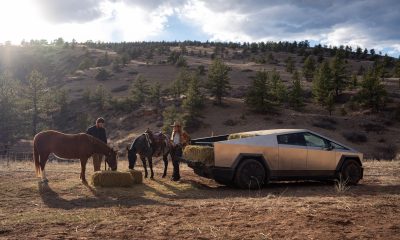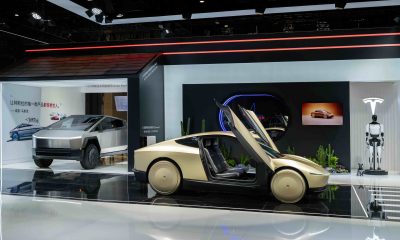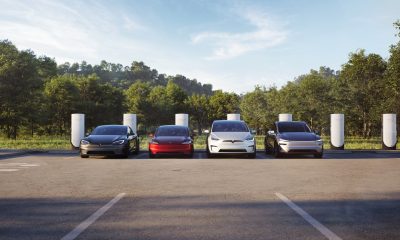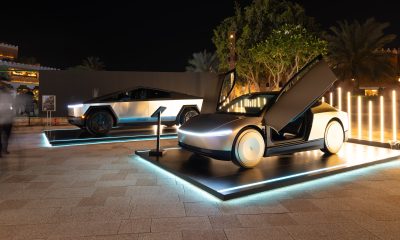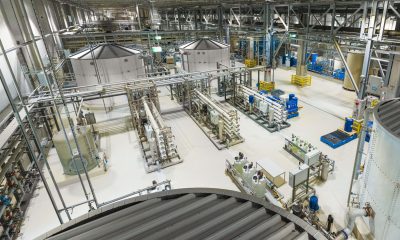News
Tesla Superchargers could be coming to a gas station near you
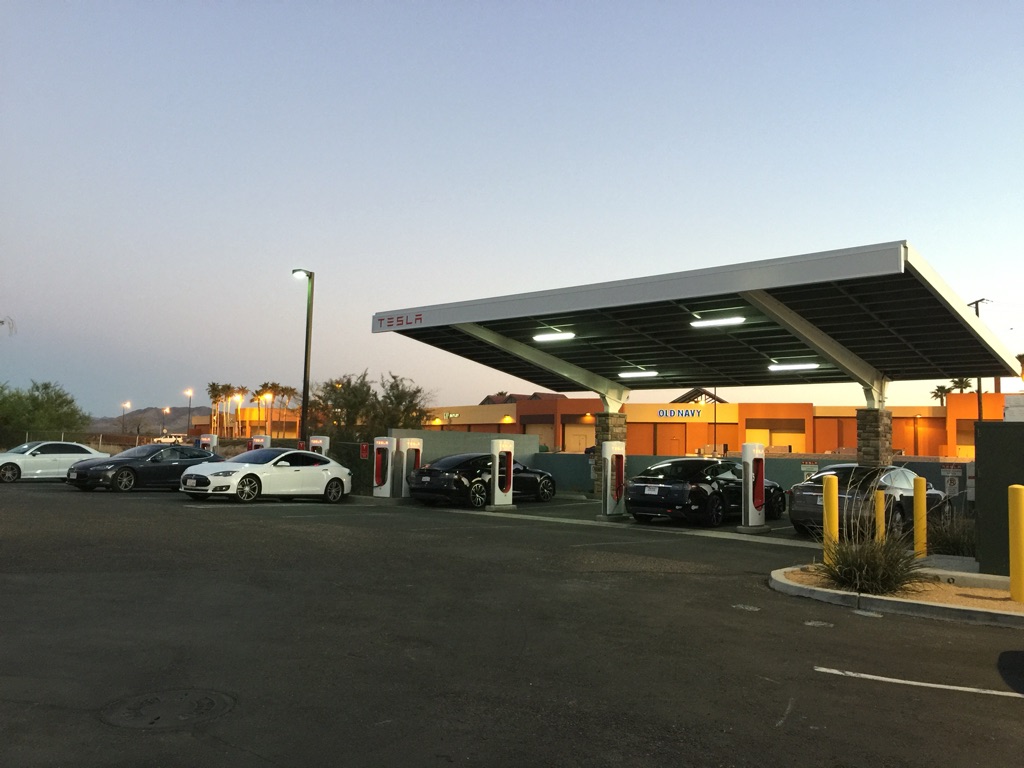
If you are in the business of selling gasoline and diesel fuel, why would you want to install chargers for electric cars, too? Gas stations today live and die on volume turnover geared to the roughly five minutes it takes to fill the tank. They make most of their profit on coffee, cigarettes and snacks that can be dispensed quickly. The electric car revolution may change all that and, once again, Tesla Motors is at the forefront of the change.
Sheetz operates a large chain of gas stations. It has hundreds of retail outlets located in six states, mostly in the mid-Atlantic region. It does nearly $7 billion in business every year. Eight of its stores already have charging stations where EV drivers can recharge their batteries. Sheetz is currently talking to Tesla about adding its charging infrastructure to the Sheetz locations.
“We’ve had discussions with them about putting their chargers in our stores,” confirmed Michael Lorenz, Sheetz’s executive vice president of petroleum supply, in an interview. “We haven’t done anything yet, but we’re continuing those discussions.” He declined to say how many Sheetz locations might be involved.
Tesla declined to comment on the negotiations with Sheetz, but acknowledged in a statement that it is actively courting gas stations, hotels and restaurants in its bid to install high-speed electric chargers across the country.
Sheetz may be ahead of the curve at this time, but the coming electric car revolution is getting bigger in the rear view mirror. Already, marketing experts are recommending that gas stations start thinking about adding chargers to their facilities. Bloomberg New Energy Finance estimates that within six years electric cars will be as affordable as traditional gasoline-powered vehicles. By 2040, roughly 1 in 3 new vehicle sales could be an EV, according to Bloomberg.
Gas stations routinely dig up and replace their fuel tanks. It makes economic sense to bury the conduits that will be needed for the chargers of the future while that work is being done, even if the actual chargers are not installed until later.
As average fuel economy rises and advances in clean transportation technology occur, traditional gas stations will soon face a difficult choice: adapt or die. Federal estimates suggest that by 2035, U.S. drivers could be consuming 20% less gasoline than they do today, says John Eichberger, executive director of the Fuels Institute, founded by the National Association of Convenience Stores.
“Those kiosks that just sell gallons and smokes are going to have to change,” says Eichberger. “They’re going to lose gallons. Plain and simple, no way around it.”
He adds that the typical gas station of the future will likely look completely different from the fast paced “get ’em in, get ’em out” stores of today. He thinks they will be more like restaurants or highway rest stops than convenience stores. Tesla is at the forefront of this paradigm shift in which customers stay longer and spend more. The more gas stations that move in that direction, the better for Tesla.
Tristen Griffith is the president of the Sacramento 49er Travel Plaza, a truck stop that spent the past year researching EV technology. Recently, Griffith made the decision to let a third-party company, NRG Energy, install a set of EV chargers on her commercial property.
“We want to sell gas and diesel, but our future is electric vehicles, and trucks are going to be driverless,” said Griffith. “Times are changing, and we need to keep up with that change as well, if we want to be smart and stay ahead of the game.”
Staying ahead of the game is Tesla’s greatest strength. The question Tesla fans should be asking themselves at this point is exactly what does Tesla have in mind for charging the millions of electric cars it says it will be building in a few short years? Is it thinking about a parallel system to its Supercharger locations? Will it have one system for Tesla owners and another for drivers of other electric cars?
We simply don’t know, and won’t until Tesla decides to let us in on its plans.
Source: Washington Post
Cybertruck
Tesla announces delivery timeline for Cybertruck in new market
“Coming soon! Estimated deliveries in Q1 for UAE.”
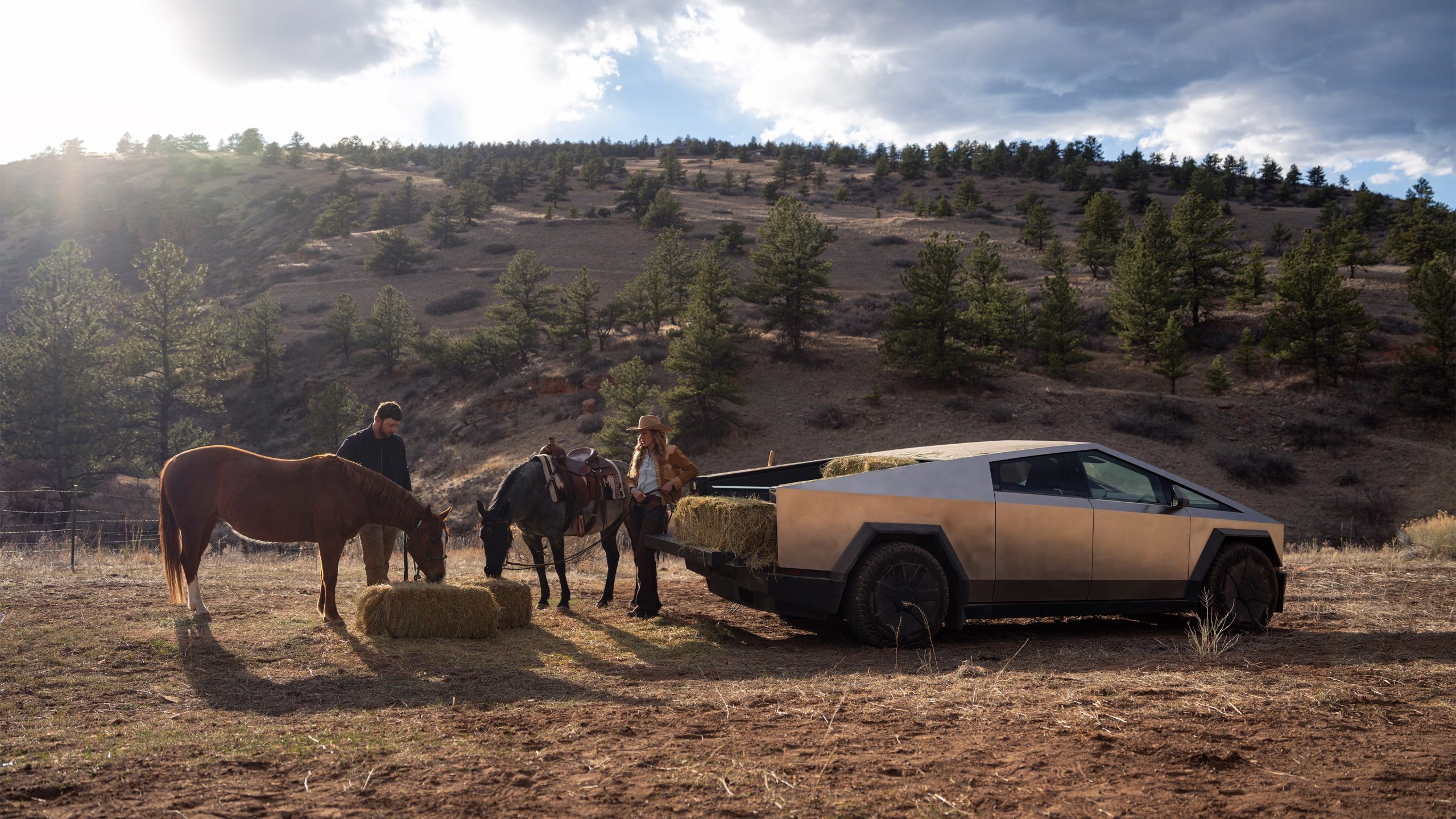
Tesla announced its delivery timeline for the Cybertruck as it heads to a new market.
Tesla Cybertruck deliveries started in the United States and Canada back in late 2023. However, the company has been looking to expand the all-electric pickup to new markets, including the Middle East, for which it opened up orders for earlier this year.
Initially, Tesla planned to launch deliveries late this year, but there has been a slight adjustment to the timeline, and the company now anticipates the pickup to make its way to the first adopters in the United Arab Emirates in Q1 2026.
This was confirmed by the Tesla Cybertruck program’s lead engineer, Wes Morrill:
Coming soon! Estimated deliveries in Q1 for UAE
— Wes (@wmorrill3) November 2, 2025
Tesla first opened orders for the Cybertruck in the Middle East in mid-September of this year. It will be priced at AED 404,900 for the Dual Motor All-Wheel-Drive ($110,254) and AED 454,900 ($123,869) for the Cyberbeast trim.
The Cybertruck has been a highly anticipated vehicle in many parts of the world, but its ability to be sold in various regions is what is truly causing delays in the company’s efforts to bring the electric pickup worldwide.
Tesla confirms Cybertruck will make its way out of North America this year
In Europe, various agencies have challenged the design of the Cybertruck, arguing that it is unsafe for pedestrians due to its sharp edges and “boxy” design.
Agencies in the EU have said the vehicle’s “blade-like” protrusions are a violation of rules that ban sharp exterior edges that could cause severe injuries.
In Asia, Tesla will likely have to develop a smaller, more compact version of the vehicle as it does not align with local standards for urban environments. However, Tesla filed for energy consumption approval for the Cybertruck in December 2024, but there has been no real update on the status of this particular inquiry.
Overall, these issues highlight a real bottleneck in futuristic vehicle designs and the out-of-date regulations that inhibit the vehicle from becoming more widely available. Of course, Tesla has teased some other designs, including a more traditional pickup or even a compact Cybertruck build, but the company is not one to shy away from its commitments.
Nevertheless, the Cybertruck will appear in the Middle East for the first time in 2026.
Elon Musk
Tesla teases new AI5 chip that will revolutionize self-driving
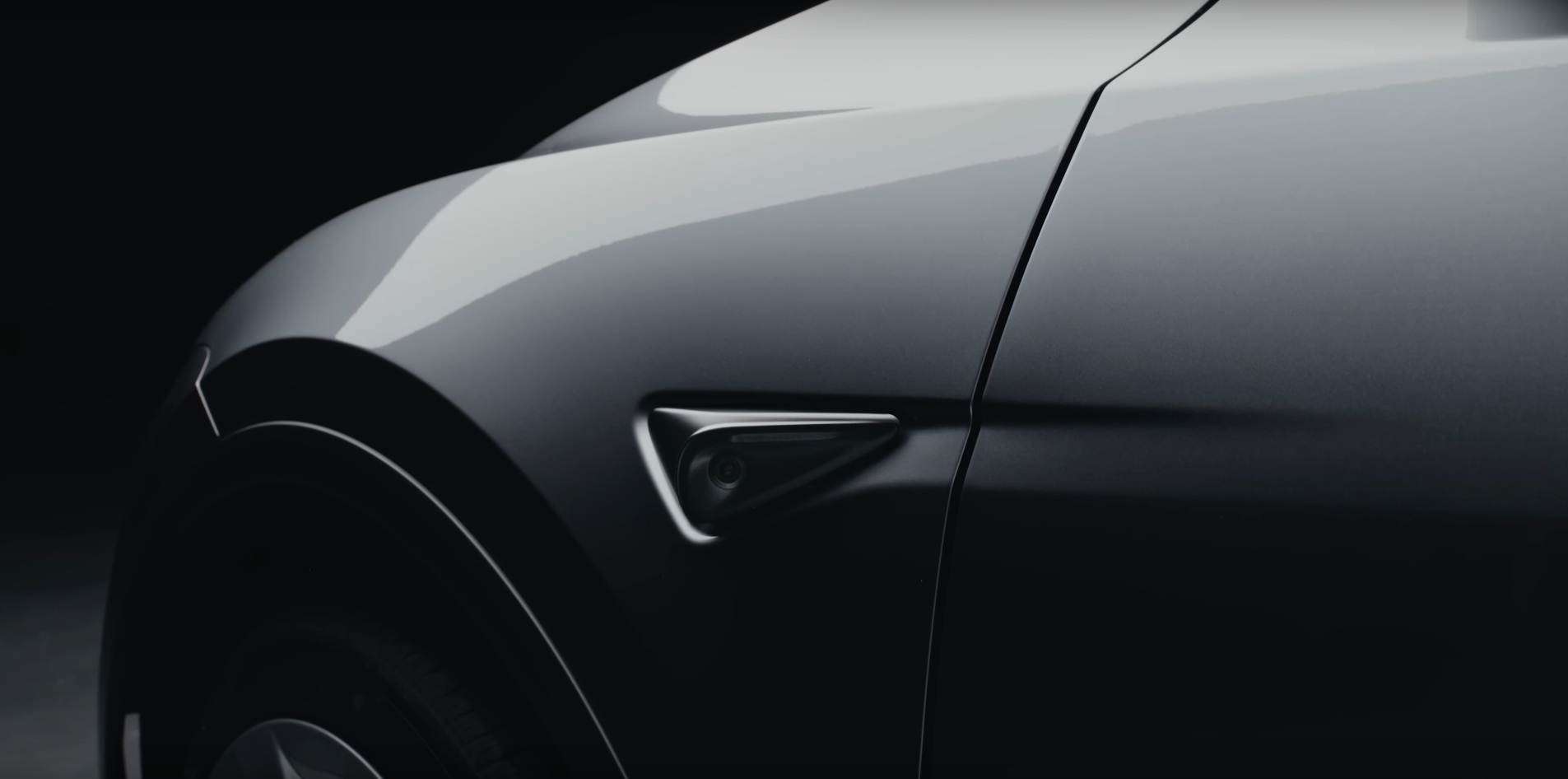
Elon Musk revealed new information on Tesla’s AI5, previously known as Hardware 5, chip, for self-driving, which will be manufactured by both Samsung and TSMC.
The AI5 chip is Tesla’s next-generation hardware chip for its self-driving program, Optimus humanoid robots, and other AI-driven features in both vehicles and other applications. It will be the successor to the current AI4, previously known as Hardware 4, which is currently utilized in Tesla’s newest vehicles.
Elon Musk reveals Tesla’s HW5 release date, and that it won’t be called HW5
AI5 is specially optimized for Tesla use, as it will work alongside the company’s Neural Networks to focus on real-time inference to make safe and logical decisions during operation. It was first teased by Tesla in mid-2024 as Musk called it “an amazing design” and “an immense jump” from the current AI4 chip.
It will be roughly 4o times faster, have 8 times the raw compute, 9 times the memory capacity, 5 times the memory bandwidth, and 3 times the efficiency per watt.
It will be manufactured by both TSMC and Samsung at their Arizona and Texas fab locations, respectively.
Here’s what Musk revealed about the chip yesterday:
Different Versions
Samsung and TSMC will make slightly different versions of the AI5 chip, “simply because they translate designs to physical form differently.” However, Musk said the goal is that its AI software would work identically.
This was a real concern for some who are familiar with chip manufacturing, as Apple’s A9 “Chipgate” saga seemed to be echoing through Tesla.
Back in 2015, it was found that Apple’s A9 chips had different performances based on who manufactured them. TSMC and Samsung were both building the chips, but it was found that Samsung’s chips had shorter battery life than TSMC-fabricated versions.
Apple concluded that the variance was about 2-3 percent. However, Tesla will look to avoid this altogether.
Release and Implementation into Vehicles
Musk said that some samples will be available next year, and “maybe a small number of units” would equip the chip as well. However, high-volume production is only possible in 2027.
This means, based on Tesla’s own timeline for Cybercab production in Q2 2026, early iterations of the vehicle would rely on AI4. Many believe AI4 can be utilized for solved self-driving, but the power of subsequent versions, including AI5 and beyond, will be more capable.
AI6 and Beyond
AI6 will utilize the same fabs as AI5, but there would be a theoretical boost in performance by two times with this version.
AI6 could enter volume production by mid-2028. However, AI7, which Musk only briefly mentioned, “will need different fabs, as it is more adventurous.”
News
Tesla makes a splash at China’s Import Expo with Cybercab and Optimus
It appears that Elon Musk’s vision is something that still resonates with people.
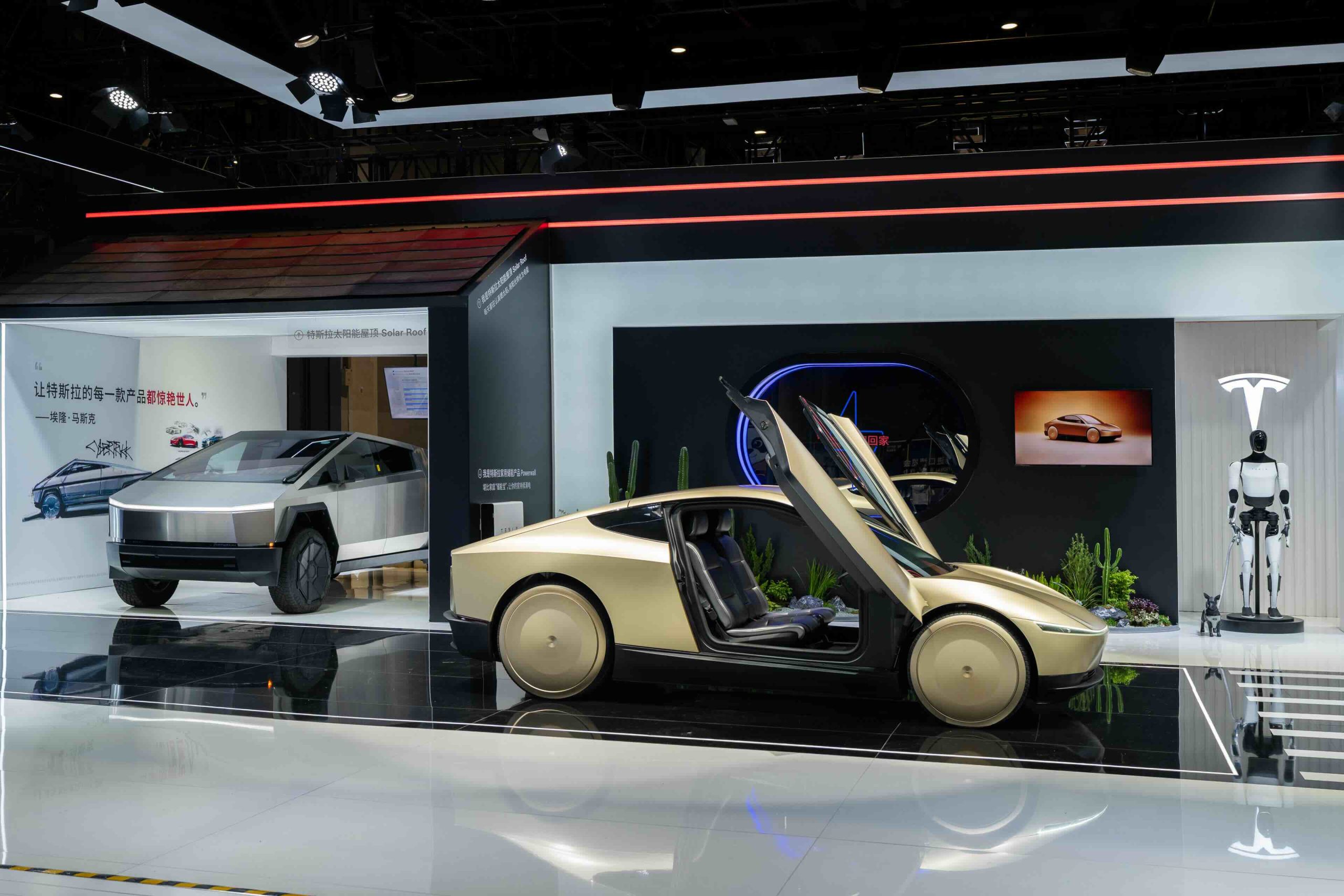
Tesla’s fully autonomous Cybercab made its first appearance in the Asia-Pacific region at the 8th China International Import Expo (CIIE) in Shanghai on November 5, becoming the centerpiece of an event that drew 12 of the world’s leading automakers.
The new model offers a glimpse into Tesla’s driverless ride-hailing future, and based on the reception of the event’s attendees, it appears that Elon Musk’s vision is something that still resonates with people.
Tesla showcases its driverless vision with the Cybercab
At this year’s expo, themed “Mobility, Infinite Possibilities,” Tesla’s futuristic two-seat Cybercab stood out as a showcase of complete autonomy. According to Tesla staff, the vehicle lacks both a steering wheel and pedals, relying entirely on Tesla’s cameras and an end-to-end neural network designed for full self-driving.
The Cybercab will ultimately serve in the company’s expanding Robotaxi fleet, a cornerstone of Elon Musk’s long-promised autonomous mobility network. During the event, a Tesla employee emphasized that the Cybercab’s model’s compact layout reflects real-world usage, as 92% of trips involve just one or two passengers, as noted in a Sina News report. Trips that require more passengers could easily be handled by the Model 3 and Model Y, which are both capable of seating four, or even five passengers.
Optimus, Tesla’s humanoid robot that is designed for both home and industrial use, was also present at the event. Similar to the Cybercab, Optimus also attracted quite a lot of attention from the event’s attendees.
Automakers reaffirm commitment to Chinese innovation
Other global automakers, including Volkswagen, Mercedes-Benz, and Honda, also displayed cutting-edge concept cars and intelligent systems, but few captured the same interest as Tesla’s bold showcase of its autonomy and robotics.
Beyond new models, this year’s CIIE highlighted a renewed focus on local innovation and collaboration in China’s rapidly evolving EV landscape. Executives from Volkswagen, Audi, and General Motors reaffirmed that their long-term strategies center on “in China, for China,” strengthening R&D operations and forming tech partnerships with domestic suppliers.
-

 News1 week ago
News1 week agoTesla Cybercab spotted testing on public roads for the first time
-

 Elon Musk5 days ago
Elon Musk5 days agoNeuralink’s first patient could receive an upgrade: Elon Musk
-
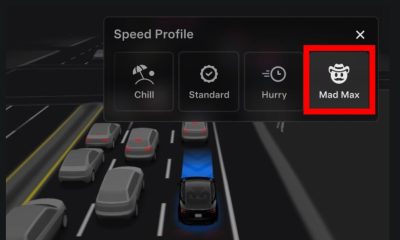
 News2 weeks ago
News2 weeks agoTesla ‘Mad Max’ gets its first bit of regulatory attention
-

 News2 weeks ago
News2 weeks agoTesla reveals its plans for Hardware 3 owners who are eager for updates
-

 News6 days ago
News6 days agoNeuralink’s first human patient reflects on 21 months with brain implant “Eve”
-

 News2 weeks ago
News2 weeks agoTesla VP explains why end-to-end AI is the future of self-driving
-

 News5 days ago
News5 days agoTesla Cybercab almost looks production ready in new photos
-
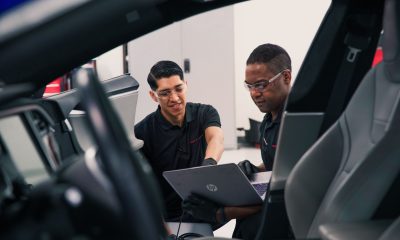
 News2 weeks ago
News2 weeks agoTesla makes a massive change to a Service policy that owners will love


